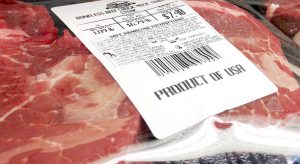New COVID Relief Fund for Farmers
Last week USDA began accepting applications from farmers and ranchers for the Coronavirus Food Assistance Program (CFAP). CFAP provides direct payments to some agricultural producers affected by price declines and additional marketing costs due to the COVID-19 pandemic.
Although the deadline is August 28, interested producers should apply ASAP because this is a first-come-first-serve program that is likely to run out of funds long before the deadline. Call your local FSA office (find here: https://www.farmers.gov/service-center-locator) to get an appointment to submit the paperwork. You aren’t required to have an appointment, but are encouraged to do so.
- Step 1: Review the eligibility and documentation criteria to determine if you can and should apply. (A brief review is below.)
- Step 2: If you have questions or would like feedback on your application, either call the producer hotline at 877-508-8364 or your local FSA office. Appointment delays are expected.
- Step 3: Download all forms and begin compiling necessary documentation.
- Step 4: Work directly with your local FSA office to submit your application by scanning, emailing, or faxing.
- Additional tips
- Ask for a receipt for service
- Contact FLAG (http://www.flaginc.org/contact/) or Farm Aid (https://www.farmaid.org/about-us/contact/) with cases of discrimination
- Producers do not need to have an FSA farm number or have participated in past FSA programs to begin the application process.
WHO IS ELIGIBLE AND WHO MAY BENEFIT?
- This aid is limited to specific products and types of loss. The benefits of the program will vary significantly based on a producer’s scale, eligible crops, and price losses. You can find eligibility details on USDA’s main CFAP website and also distilled in this blog post by the National Sustainable Agriculture Coalition (NSAC).
- The program will provide the most benefits to: 1) larger operations focused on growing a few commodity crops, 2) operations with standardized production documentation systems, 3) some livestock producers, and 4) potentially some organic or specialty crop operations that typically sell into wholesale markets.
- CFAP will not be as well suited for small, highly diversified operations, especially those focused on direct-to-consumer market channels.
WHICH ANIMALS ARE COVERED?
- Cattle, hog, and sheep producers are eligible to receive CFAP payments if they can demonstrate they have suffered at least a five percent price decline as a result of the pandemic and face additional costs in marketing their livestock due to unexpected surplus and disrupted markets.
- All dairy producers who had any production this year are eligible for CFAP.
- Wool producers are eligible to receive CFAP payments if they can demonstrate they have suffered at least a five percent price decline because of the pandemic.
- Poultry (meat and egg) producers are NOT eligible for CFAP payments at this time.
HOW DOES IT WORK?
- The specific payment amount is different for every eligible item, and payments will be based on USDA-determined rates multiplied by volume or inventory of eligible product. Payments will not reflect a producer’s actual market price.
- The payment formulas are based on wholesale commodity prices and do not account for higher prices a producer might receive for organic certification, direct-to-consumer sales, value-added products (e.g. cheese), or production methods (e.g. grassfed beef).
- Documentation varies significantly by product. Refer to the CFAP website and NSAC blog.
- USDA has a payment calculator tool that can help you determine if the CFAP makes sense for you. A video demonstration of the tool is available at https://www.youtube.com/watch?v=mGXl7dr8kaQ
NEXT STEPS
If you want to petition USDA to accept commodities not currently accepted under CFAP, first read the USDA’s guidance and then submit comments at regulations.gov. Deadline for comments is June 22.
The National Family Farm Coalition has a good statement of concerns about the expected distribution of CFAP funds. Read it HERE.
